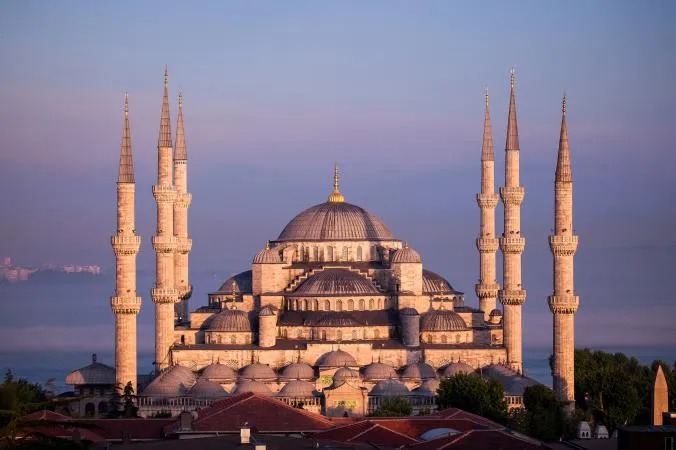
SULTAN AHMED MOSQUE (BLUE MOSQUE)Constructed during the early 17th century, Istanbul's most photogenic building gets its nickname from the blue tiles adorning the interior.
PHOTOGRAPH BY KEITH ARNOLD, GETTY IMAGES
İstanbul's 400-year-old Sultan Ahmed Cami Mosque, otherwise known as the Blue Mosque for its blue-tiled interior, is one of only two mosques in Turkey with six minarets. Explore.org founder Charles Annenberg Weingarten ascends one of the Mosque's stairways.
By Alexandra E. Petri
Roughly one-quarter of the world is Muslim. With facades dressed in mosaics, glowing marble, crowning domes, and spiraling towers, mosques are awe-strikingly stunning from the outside. In off-prayer hours, wander inside these magnificent structures and you'll find exquisite prayer halls accentuated by gorgeous Persian carpets or valleys of chandeliers.
Also known as masjids in Arabic, mosques are places of prayer and worship in Islam, but they also function as much more. Often they serve as community centers with classes or as social places hosting events and holidays, like Ramadan.
Historically speaking, mosques were not always as ornate as some we see today, like the famous Sheikh Zayed Mosque in Abu Dhabi. In fact, the first-ever mosque was home of the prophet Muhammed in Medina, Saudi Arabia. Muhammed would stand in front of the wall his courtyard that faced Mecca and would preach to the followers that gathered together to hear him.
Since then, the spread of Islam from the Middle East has fostered the proliferation of mosques around the world. Reflective of where and when they were built, mosques showcase different styles or designs, but travelers should look for some key characteristics: A prayer hall with an ablutions area, where worshippers can clean themselves before prayer; mihrabs, or semicircles in the wall of a mosque that indicates the direction of Mecca; minarets, or towers, from which the call to prayer is announced five times per day; and domes that glow like orbs .
From Timbuktu to Washington D.C., these holy marvels provide incredible historic, cultural, and religious commentary, illustrating a city’s identity within the Muslim world and as a destination all its own. Travel across continents and countries with these photos from around the world, and whenever possible, make time to visit a mosque on your next trip.
video.nationalgeographic.com/video/exploreorg/turkey-blue-mosque-eorg
NASIR AL MOLK MOSQUE
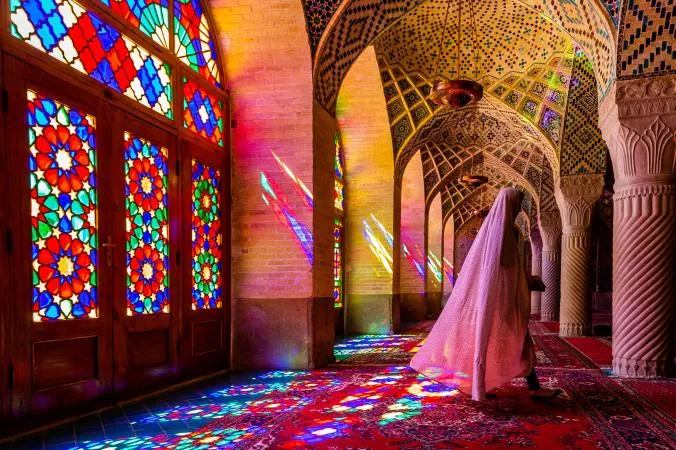
Uncommon in mosques, the stained glass windows of Iran's Nasir al Molk in Shiraz illuminate its Persian carpets with a kaleidoscope of patterned flecks of light.
PHOTOGRAPH BY RICHARD I'ANSON, GETTY IMAGES
ISTIQLAL MOSQUE
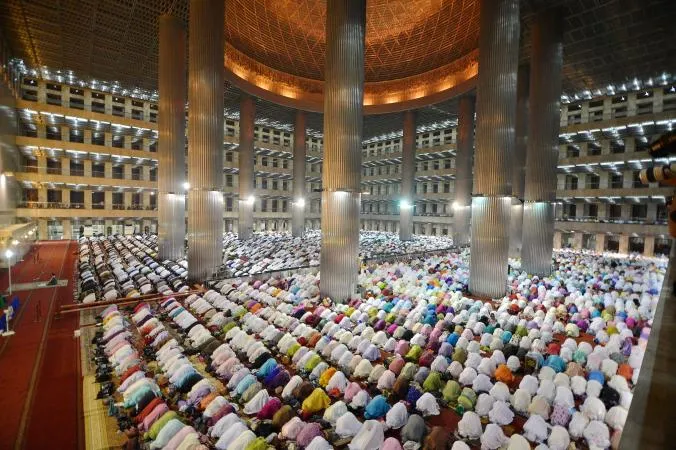
At the time of its construction in the late 20th century, Jakarta's Istiqlal was considered avant-garde for its minaret and dome, considered "too Arabic" for the local Muslim population. Traditionally, Javanese mosques include a layered, triple-roof style.
PHOTOGRAPH BY DASRIL ROSZANDI, ANADOLU AGENCY/GETTY IMAGES
JAMA MASJID MOSQUE
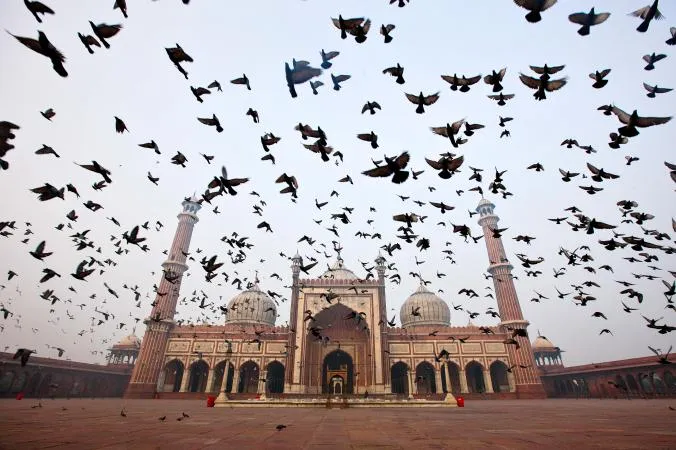
India’s Jama Masjid features a red sandstone and marble exterior that pay homage to the Mughal empire, much of which was influenced by Persia.
PHOTOGRAPH BY ZHENG HUANSONG, XINHUA/REDUX
SHAIKH ZAYED GRAND MOSQUE
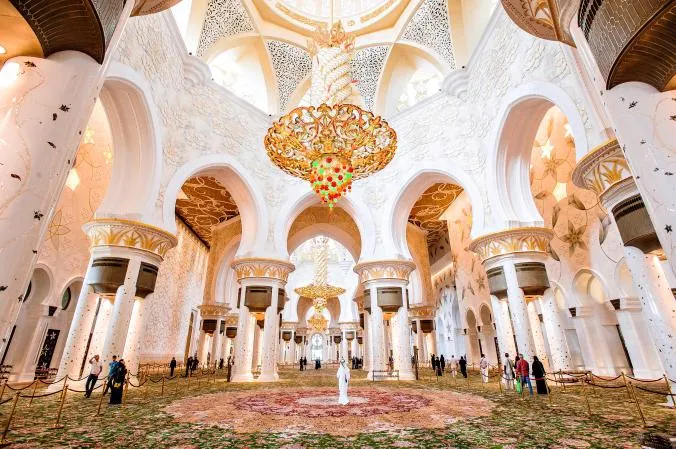
The massive Grand Mosque in Abu Dhabi holds more than 40,000 worshippers in its courtyard and prayer hall. The world's largest Persian carpet stretches inside under German-imported chandeliers made with Swarovski crystals.
PHOTOGRAPH BY LUTZ JAEKEL, LAIF/REDUX
SULTAN HASSAN MOSQUE
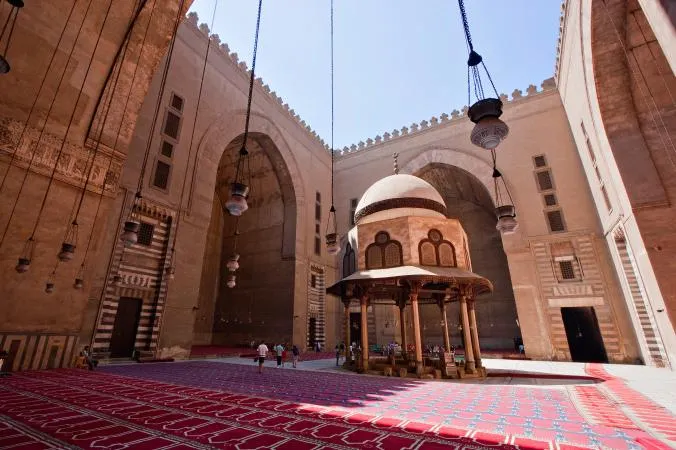
Functioning as both a school and a mosque in Cairo for almost 300 years, Sultan Hassan provides an archetype mosque for experts to explain what Islamic philosophy is all about.
PHOTOGRAPH BY GETTY IMAGES
SHAH MOSQUE

One of the most celebrated characteristics of Iran’s Great Mosque of Isfahan is its expansion and development for more than 10 centuries, representing nearly a thousand years of Islamic art and architecture.
PHOTOGRAPH BY GETTY IMAGES
NATIONAL MOSQUE OF MALAYSIA

The roof of the National Mosque of Malaysia, built in capital Kuala Lumpur during the late 20th century, draws its inspiration from the underside of an open umbrella.
PHOTOGRAPH BY MANAN VATSYAYANA, GETTY IMAGES
EDUCATION CITY MOSQUE
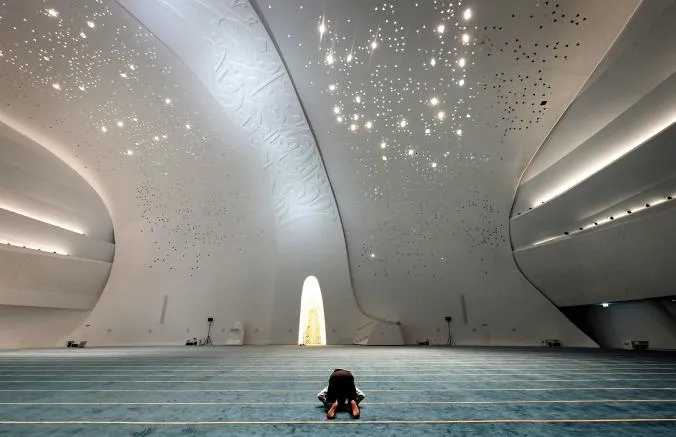
This mosque in Doha is elevated on five piers, that represent the five pillars of Islam—shahada (knowledge), salat (prayer), zakat (charity), siyam (fasting) and hajj (pilgrimage)—each engraved with Quranic verses in elegant calligraphy.
PHOTOGRAPH BY BONNIE JO MOUNT, THE WASHINGTON POST/GETTY IMAGES
HASSAN II MOSQUE

Hassan II Mosque's nearly 700-foot minaret–the tallest in the world–is as iconic to Casablanca as the Empire State Building is to New York.
PHOTOGRAPH BY WOLFGANG KAEHLER, GETTY IMAGES
IBN TULUN MOSQUE
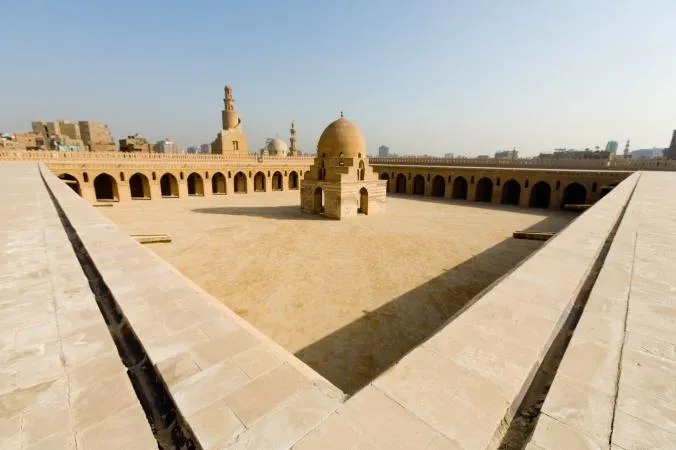
One of the best preserved mosques in Egypt, this majestic red brick complex was built in 876 by the Turkish governor of Egypt and Syria.
PHOTOGRAPH BY MICHEL SETBOUN, GETTY IMAGES
SÜLEYMANIYE MOSQUE
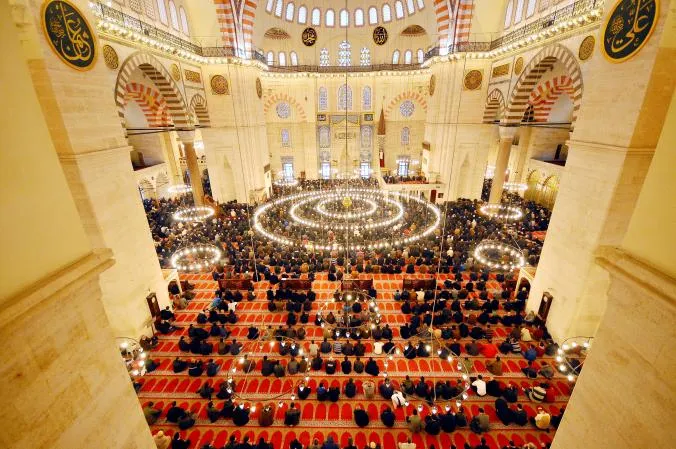
Ottoman mosques, like Istanbul's Süleymaniye Mosque, intentionally imitate the church of Hagia Sofia, another major tourist site in the city.
PHOTOGRAPH BY NIMON_T, GETTY IMAGES
ISLAMIC CENTER IN WASHINGTON D.C.

The Islamic Center in Washington D.C. is celebrated for fusing together differing styles and cultural influences, particularly from Iran, Egypt, and Turkey.
PHOTOGRAPH BY GETTY IMAGES
SHAH FAISAL MOSQUE

Produced in the late 1970s, the Shah Faisal Mosque in Islamabad is a modern mosque that is Sunni in its practice, accomodating all of the rituals of the different denominations in the Muslim world.
PHOTOGRAPH BY SHAHID KHAN, ALAMY STOCK PHOTO
GREAT MOSQUE IN KAIROUAN
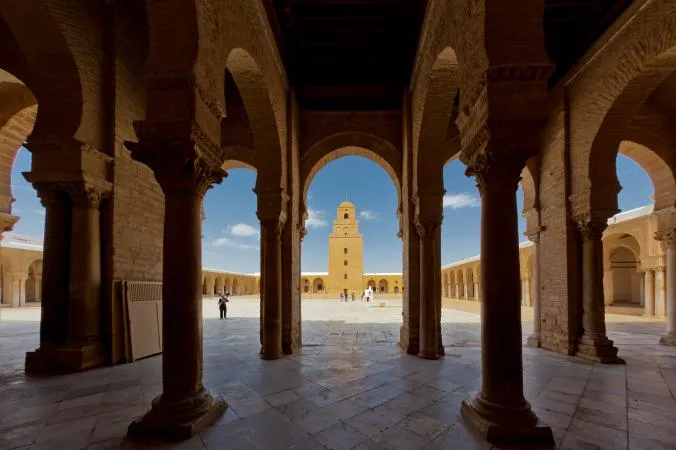
The first Islamic city in North Africa and one of the four holiest cities for Muslims, Kairouan’s holy trifecta is complete thanks to the Grand Mosque of Kairouan, a structure in Tunisia admired for being an example of Islamic architecture of Muhammed’s house in Medina, considered the first mosque.
PHOTOGRAPH BY RON WATTS, GETTY IMAGES
Link : https://www.nationalgeographic.com/travel/lists/beautiful-mosques-around-the-world/